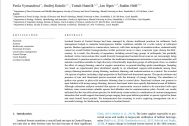Content
Lowland forests of Central Europe had been managed by diverse traditional practices for millennia. Such management helped to maintain heterogeneous habitat conditions suitable for a wide variety of arthropod species. Modern approaches to conservation, however, with their strategies of nonintervention, unintentionally caused an overall habitat homogenization within protected areas in many ecosystem types during the 20th century. As a result, the diversity of organisms, including several large groups of arthropods, has gradually declined. Active interventions that would diversify homogenized lowland forest reserves are increasingly being reintroduced. A question remains as to whether the traditional management restoration at various intensities will maintain conditions suitable for high diversity of functionally important groups of arthropods. Here, we studied the effect of canopy thinning, aimed at coppice restoration, on ground-dwelling spider assemblages. Sampling was based on experimental plots distributed equally in an abandoned coppice-with-standards among three canopy thinning intensities: strong thinning, moderate thinning, and nonintervention as a control. We recorded 116 species of spiders, including a high proportion of Red-listed and threatened species. The species richness and presence of rare and threatened species increased with the intensity of canopy thinning. The abundance of spiders was greater in plots with moderate thinning than in control plots. Functional richness was greatest in open habitats with strong canopy thinning, however functional traits were equally distributed across all habitats. Although ordination analyses revealed that species of conservation concern tended to be associated with open habitats, some conservation-valuable species had affinities also for nonintervention plots. Overall, our results indicated that the best silviculture practice for biodiversity conservation is a combination of various management intensities that would support functional groups ranging from open habitat specialists to species typical for dense and more humid forest patches. We demonstrated that returning to active coppicing management can be a successful strategy for biodiversity restoration in lowland forests.



